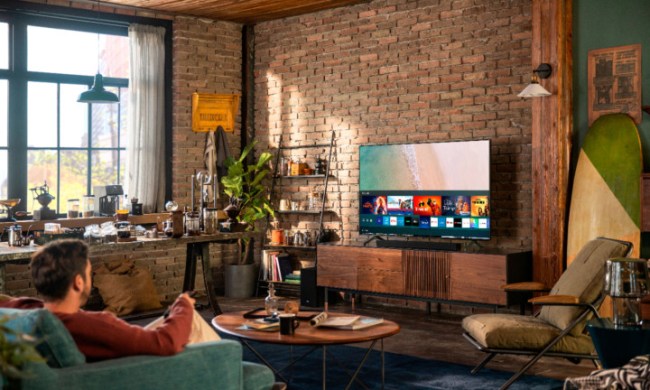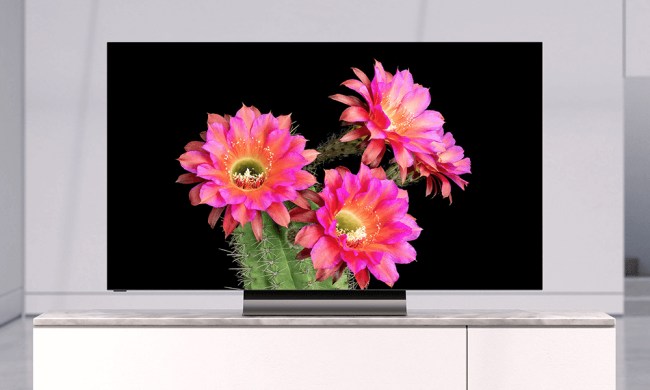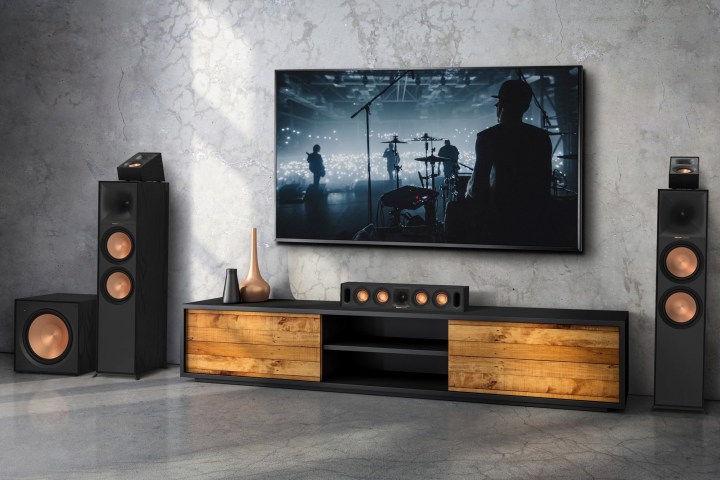
“My speakers cost more than my car.”
We actually heard someone say those words at an audio convention — and we’re inclined to believe him, too, because speakers can get outrageously expensive. After we got done stifling our chuckles, though, the statement got us thinking about how speakers really are an important investment, and why it is that more people don’t treat their speaker purchases more like their car purchases.
Both are important investments, both serve practical and frivolous needs, and both vary greatly in terms of size, aesthetics, quality, performance, and price. Yet, most people we know will spend weeks, if not months, researching, test-driving, haggling and, ultimately, purchasing a new car, whereas those same shoppers are known to simply walk into a big-box electronics store, hear a demonstration, and walk out with a set of speakers.
The truth is, the right set of speakers, if properly taken care of, will last significantly longer than your car. The key to sonic bliss is to empower yourself with knowledge, do a little research, and spend some time test driving before pulling the trigger.
We’re here to help. Below is our guide to the ultimate speaker-buying process from beginning to end. Armed with the knowledge contained within, your next speaker purchase can be easy, fun, and downright gratifying.
Speakers 101: A primer
If you’ve already started reading audio or home theater magazines, then you may have run into some terminology that you aren’t familiar with. If you already know the difference between a satellite and a monitor or a surround and a rear surround, then please feel free to skip ahead. For those who need to do a little catching up, make sure to check out our home audio glossary for a brief overview of what is happening in speaker-land these days.
What will you use them for?
You don’t necessarily need huge speakers or a full-blown 7.1-channel surround system to get great sound. Take a moment to think about what your listening habits are.
If you primarily listen to music, one pair of speakers may be exactly what you need to enjoy your music with occasional TV and movies as well.
If you are a passive music listener and don’t see yourself sitting down to appreciate the sound for extended periods of time, then a pair of quality bookshelf speakers or in-wall speakers may be the ticket. Want more bass? A small subwoofer can deliver the extra low end you are looking for.
If you are more of an active listener, or simply want the option of having your hair blown back on a whim, a pair of monitors or floor-standing speakers may be in order. Remember that a small floor-standing speaker with multiple drivers can deliver a really full-sounding, highly satisfying music experience without taking up much space.
If you are just looking to beef up the sound of your TV for general TV and movie watching and perhaps occasional music listening, a soundbar or soundbar and wireless subwoofer combination may be a great choice. There are several quality options on the market you can find in our reviews section.
Say you’re a movie buff and surround sound is a must. At that point, you need to start thinking about where all the speakers in a surround system would be placed. To that end, let’s take a look at the factors involved with your room.
Surveying your space
An important part of the process for refining your speaker search is to consider the space they will be operating in. Let’s look at the most important factors involved in what is to be your speakers’ new home.
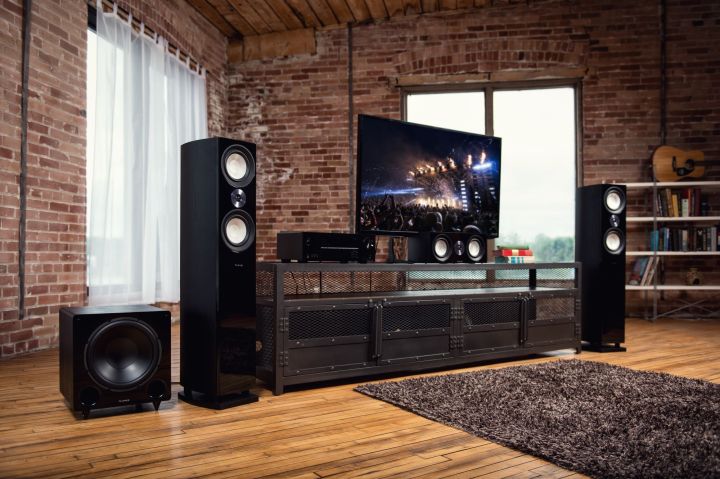
Room size: Ask a professional for advice and one of the first questions they are likely to ask is “how big is your room?” Ideally, they aren’t trying to gauge just how big a speaker they can sell you on; rather, they should be trying to determine what effect your room characteristics will have on your speakers’ sound. Room size, however, is just one consideration. We also need to think about how open the room is.
Generally speaking, small, closed in rooms with walls on all sides are not great environments for really large speakers. One, they take up lots of space. Two, they tend to “load” the room with bass, which can result in muddy sound. Conversely, large, open rooms (like “great rooms”) will make a small speaker sound small and localized. Larger speakers can help keep the sound-stage lifelike, seamless and more immersive, all important parts of home theater sound.
Speakers in furniture: Will you need to place some of your speakers inside an entertainment cabinet? If so, you will want to stay away from large bookshelf or monitor speakers with ports that produce lots of bass. All of that bass will just end up bouncing around in the cabinet and probably produce some unwanted resonances. If you must place speakers inside a cabinet, plan on finding a bookshelf speaker that stops playing bass around 80Hz or so. While we’re on the topic, the inside of a cabinet is about the worst place you can stick a ported subwoofer. Select a spot for your sub or plan on looking for a sub with a shape that will make it easy to tuck away in a hidden spot.
Speakers in the corner: Placing full-range, floor-standing speakers on either side of a TV that squares off a corner comes with some challenges. This arrangement has a way of canceling out bass, which is a big part of what you might be paying for with a full range, floor-standing speaker. In these cases, you are likely to get more bang for your buck if you go with bookshelf speakers and a separate source of bass, i.e.: a subwoofer.
Walls and floors: Hard surfaces are good sound’s chief enemy. No matter how great the sound is coming out of a speaker, if there are a bunch of large, smooth surfaces for that sound to reflect off of, it will change what you hear. If you’re worried your room might be too “live”, go stand in the center of it and clap loudly. If you hear a lot of echo or a ringing sound, consider putting your system in another room or taking steps to calm down that echo. Furniture, drapes, carpet, plants…anything that helps break up long, hard, flat surfaces will help whatever speaker you get sound its best.
Décor: If you or your significant other spent good time (and money) making the room look nice, then you should consider looking at speakers that will compliment the space, not clash with it. Believe us when we say that hearing about how ugly your speakers make the room look on a regular basis will make you rue the day you made that purchase. The good news is, there are some flat-out gorgeous speakers with furniture-grade finishes out there that are bound to integrate nicely with your room’s décor.
Speaker placement options: Now we’re back to thinking about where you can put speakers in an effort to determine how many of them can be reasonably incorporated into your system. For instance, if your couch or chairs are up against a wall, there’s no point in attempting to cram in a 7.1 system. You will have enough challenges placing your surround speakers in a good spot, never mind worrying about the back surrounds, which need at least 3 or 4 feet of distance away from where you sit to be effective. Plan on a 5.1 system and sort out where you can put those surround speakers to get the best effect. Don’t forget the décor consideration here either.

On the other hand, if there is no wall behind you or to the sides (or they are really far away) you may have challenges finding any place to put surround speakers. In-ceiling speakers used as surrounds can make an elegant solution, provided that is an option in your home.
Sure, there are a lot of factors to consider and these are just a few of the possible scenarios. The important thing is that you take time to think about what you will use your speakers for, the room that you will put them in and possible speaker placement options. With a good idea of how many and what type of speakers you need, it’s time to start researching, the do some shopping.
Specs: Impedance, sensitivity, and other techie bits
At some point in your research and shopping endeavors, you are likely to hear that it is important to match your speakers with your receiver or amplifier. There are two facets to this concept. First, you want to make sure that, from a technical standpoint, your amplifier is capable of driving your speakers effectively and safely. The other side of this consideration is how your receiver or amplifier (for simplicity, we’ll just use “amp” generically from now on) sound together with your speakers. Let’s start with the technical part.

Speakers have an electrical characteristic known as impedance, which is measured in terms of ohms. Think of impedance as the resistance your speakers give to the electrical signal your amp is sending to them. While it may seem like resistance is undesirable, in truth, it is crucially important. The amplifier needs to see some resistance to the power it sends, otherwise it will just keep pumping out power until it burns out. Most popular receivers and amplifiers are perfectly happy driving an 8 Ohm “load.” As it happens, many popular speakers have an 8-ohm rating. You will probably only run into trouble if you attempt to drive a low-impedance speaker (4 ohms or 2 ohms) with an amplifier that just doesn’t have the juice necessary to do so safely. If you find yourself looking at 4 Ohm speakers, know that you will need some serious amplification to drive your speakers to healthy volumes without putting your speakers and amp at risk. If some of the speakers you are looking at are rated at 6 ohms, just know it will take more power to get those speakers to the volume you want. If you have a well-powered amp, you aren’t likely to run into problems unless you drive several 6-ohm speakers at once up to ear-splitting volumes. At that point, your receiver may start “clipping” and you can do damage to your speakers.
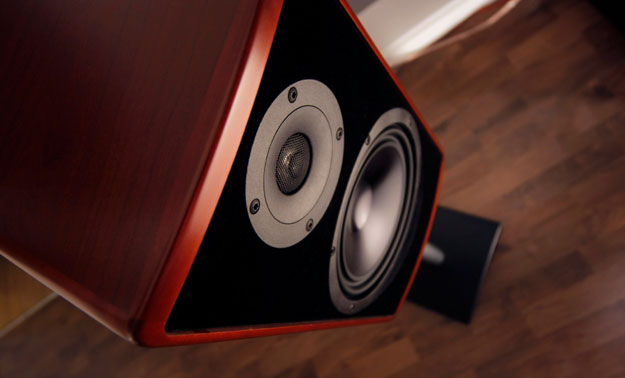
Naturally, this brings up the question of how much power your amp (or the amp you may be purchasing) has. You may be under the impression that your amp puts out 100 watts per channel. However, you might be surprised to learn that electronics manufacturers often “cook the books” to make their product’s power ratings look good and, because of that, you may actually be working with less power than you think. Don’t worry, if your amp has always sounded good with 8-ohm speakers in the past, it will continue to do so. Again, it is only if you are considering a low-impedance speaker that you should take a close look at how powerful your amp really is. If you are looking at 8-ohm speakers, whatever amp you are working with is likely to do just fine. Don’t stress about over-powering your speakers either, it is very rare that anyone does damage to speakers because their amp is too powerful. More often than not, people’s ears will give out to excessive volume before their speakers will.
Another measurement you may run into while looking at speaker specs is “sensitivity.” In a nutshell, this refers to how loud a speaker plays per watt. Speakers with a low sensitivity will require more power to get them to loud volumes. The opposite is true for high-sensitivity speakers. Generally speaking, consider a speaker with a sensitivity rating of 80dB to 88dB per watt to be on the lower end of the spectrum and 89dB to 100dB per watt or more toward the top.
There is also a synergistic consideration when pairing speakers with an amplifier related to sound characteristics. You may hear of speakers described as “bright” (an emphasis on treble), “laid back” or “punchy.” Amplifiers, like speakers, will also exhibit certain sound characteristics. You can imagine how a speaker that is described as bright paired with a receiver that is also known to sound bright could team up to produce a particularly bright sound that you might not enjoy (or you might…and that’s cool, too). Yet, when paired with an amp that is known to sound mellow, a bright speaker will be tamed and the resulting sound may be more to your taste. You can imagine the potential combinations from here. This factor can be important both for those purchasing a new amp and those that already have an amp and want to find speakers that will best match it.
Brick-and-mortar vs. online shopping
There are certain advantages and disadvantages to visiting your local electronics stores and boutiques versus shopping for your gear online. We’ll discuss the pros and cons of both to help you decide which might be best for you.
First, there’s one obvious advantage to brick and mortar stores: you can touch and hear the products you’re interested in right away. Another plus is the ability to test numerous combinations of speakers and electronics with a person on hand to do all the switching around for you, thus making the audition process a little less labor-intensive. Another often overlooked consideration is that many speaker manufacturers do not sell their speakers online, so going to an authorized dealer is the only option. Should you decide you don’t like the speakers you chose, making a return or exchange can be done right away.
On the other hand, as is often the case when purchasing a car, you are rolling the dice when it comes to what kind of salesperson you will end up dealing with…it could go either way. Buying speakers is a very subjective, personal decision and shouldn’t be rushed. You don’t need someone breathing down your neck to make a commitment before you are ready. Also, the building you are entering and all the shipping of merchandise to and from it results in unavoidable overhead costs. Often those costs of business are passed on to you through higher markup, thus the products you are looking at may be more expensive. Finally, audio showrooms are designed to sound fantastic. Dealers implement room treatments and precise set-up in order to make the equipment they demonstrate sound amazing. While there’s nothing inherently wrong with that, most people can’t duplicate such a scenario at home so what you hear at the store often turns out to be very different from what you hear at home.

We imagine that, when first suggested, the suggestion of buying something you listen to without actually listening to it first was ill received. Yet, as witnessed by the booming online speaker market, the approach is working. How? First, online speaker merchants promise high-quality speakers at budget prices. They have less overhead and ship their wares directly to their customers. Big savings makes for a compelling argument, but people still need to hear their speakers before committing to them. This is why you’ll find that many online speaker companies provide free return shipping, should you decide the product is not right for you.
The downside to buying online is turn-around time. You have to wait for your speakers to arrive and, if a return or exchange is necessary, more waiting is involved. Also, since the speakers will be entrusted to the busy hands of shippers like FedEx and UPS, there is the potential for them to be damaged in transit-more waiting in that case, too.
Add to that the fact that many of these companies are still pretty new and don’t come with the same brand recognition as those speakers that have been around since the 60s. If you’re willing to be adventurous and patient, online speaker shopping can be a blast.
The audition

Kicking the tires: When test driving an audio system, it is important to get a feel for what you are looking at and listening to. A lot can still be gleaned from the A/V equivalent of “kicking the tires”. The speaker may look cool and shiny on the outside, but you need to sort out what is happening underneath that glossy exterior.
When looking over a speaker, give it a good knock with your knuckles. It should feel solid and the sound you hear should be solid too, not empty. If you’ve ever searched for a stud in a wall, you already know what to listen for. Once you hit that stud, the sound goes from empty and cavernous to solid and dead. A speaker with a thick, rigid cabinet will bite back at your knuckles a little and that solid sound means that the inside of the cabinet isn’t going to generate unwanted resonances. This ‘knuckle test” will also clue you into how solid the finish of the speaker is. If it is a vinyl mock-up of wood, you’ll feel it.
Pick your listening material: While many electronics stores and stereo boutiques are equipped to accommodate iPods and other portable media devices, these are usually terrible sources with which to judge an audio system’s true capability. Most digital music files are compressed so a lot of the detail and refinement is missing from the music. Instead, pick some songs from a few CDs that you are really familiar with. We suggest a song with some strong bass, a quiet song, perhaps with some string instruments, a song that centers around a vocal performance and anything else you may have listened to countless times. When you have your selections in hand, listen to them some more on your old speakers and take some notes on how they sound and what appeals to you about them.

When you listen to these songs during your speaker auditions, see if you don’t hear things that you’ve never heard before — an instrument that was covered up previously, the creaking of a piano bench, or the squeaking of fingers sliding across guitar strings, for example.
On the other hand, sometimes it is what you don’t hear that makes a speaker great. Colorations of vocals and instruments, unnatural reproductions of high frequencies, overly bloated bass…these are all things you don’t want to hear from a good speaker.
Relax your ears: Some speakers sound dazzling right out of the gate but, over time, will become fatiguing. Though a speaker may sound very engaging at first, after a while you may find yourself wanting to turn them off. The only way to know is to spend time with them (another reason a home audition is crucial) It is because of this phenomenon that a wise speaker engineer once suggested that we practice relaxing our ears. The idea is to ignore your initial impression and allow your mind’s ear to adjust to the new sound you are hearing. After a while, if you just don’t like what you hear, it is probably time to move on.
This practice is especially helpful when doing A-B comparisons. Jumping back and forth too quickly doesn’t allow your mind time to adjust. You’ll always be comparing the sound you are hearing now with the sound you are hearing just before, instead of trying to compare the sound to what is natural and realistic. A-B comparisons will help you weed out the big-time losers, but they are not an effective way of deciding between two speakers you have already decided you do like.
You are the pilot: In a retail setting, you will do well to remember that you are the pilot and the salesperson is your co-pilot. It’s just fine to get some suggestions from the sales rep but, at the end of the day, this is your audition and if you’ve done your homework, you know what you need to hear in order to make your decisions. It is unfortunate, but if there is some sort of incentive (spiff) for a salesperson to sell a particular speaker, they know how to steer you in that direction. At that point, make sure you communicate what it is you want and see to it that the salesperson carries out your requests. You don’t want to be a jerk about it, but kindly explaining that you have an audition process that works for you should be the queue the rep needs to take a step back and press the buttons when asked.
Frequently asked questions
There are some frequently asked questions that we wanted to address which didn’t seem to fit any particular category, so we left them for the end. At this point, though, we hope that you feel empowered to venture out and make a wise speaker purchase. Remember, this should be fun! The moment the fun stops is the moment you know you are headed in the wrong direction. No one hears things quite the way you do.
Trust your judgment and find some speakers that move you. Good luck!
Can I mix and match speaker brands?
You can, sure, but it isn’t a great idea. Different speaker brands will sound different and when sounds move from one speaker to another in a surround sound scenario, you want the sound signature to remain the same all the way around. If you need to piece-meal your system, that’s fine. Just know that with each matching speaker you add, the better your system will sound. The one exception to this rule is the subwoofer, which leads us to our next question.
Can I buy a subwoofer from a brand that differs from my speakers?
Yes, you can, and in many cases, it is a very good idea. Not all speaker makers are necessarily great subwoofer makers (and the inverse of that statement is also true) Check out the reviews of the subwoofers that go with the speakers you are considering. If they are less than glowing, consider a subwoofer from a company that specializes in subs. The sub is a big part of a high-performance home theater system and shouldn’t be skimped on.
Do I need two subwoofers?
In many cases, a single subwoofer will produce plenty of bass and can stand on its own. There are times, though, when the area you must place your sub in is less than ideal from a performance perspective. The addition of a second subwoofer comes with a few advantages. Two subs will work together to even out “dead spots” in the room. Each sub in a dual-sub system won’t have to work as hard and, therefore, the resulting sound is often cleaner. It is also possible that your appetite for bass is flat-out insatiable. A dual-sub system should do a good job of feeding your need for big, bad bass.
Now that you’re a home audio expert, check out our individual speaker reviews and our continually updated list of the best speakers on the market.

